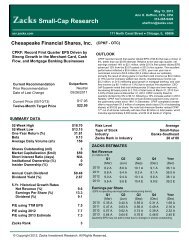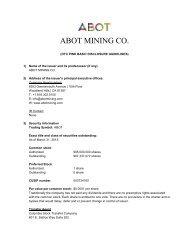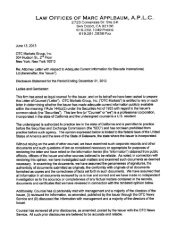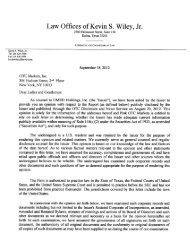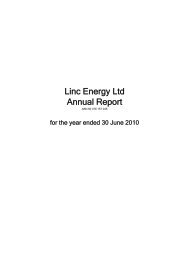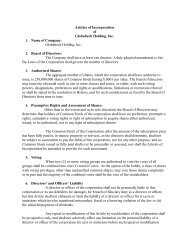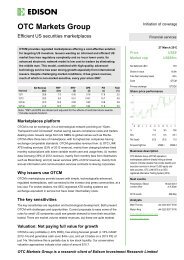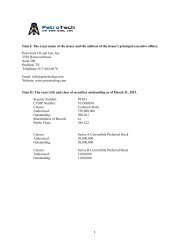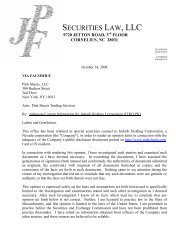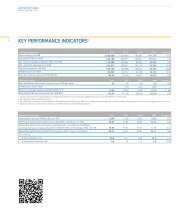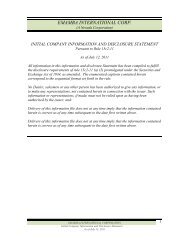2011 Annual Report - OTCIQ.com
2011 Annual Report - OTCIQ.com
2011 Annual Report - OTCIQ.com
Create successful ePaper yourself
Turn your PDF publications into a flip-book with our unique Google optimized e-Paper software.
122 Notes<br />
To implement the investment objective, the E.ON Group generally<br />
pursues a liability-driven investment (LDI) approach that<br />
takes into account the structure of the benefit obligations.<br />
This long-term LDI strategy seeks to manage the funded status,<br />
with the result that any changes in the defined benefit<br />
obli gation, especially those caused by fluctuating inflation and<br />
interest rates are, to a certain degree, covered by simultaneous<br />
corresponding changes in the fair value of plan assets. The<br />
LDI strategy may also involve the use of derivatives (for example,<br />
interest rate swaps and inflation swaps). In order to<br />
improve the funded status of the E.ON Group as a whole, a portion<br />
of the plan assets will also be invested in a diversified<br />
portfolio of asset classes that are expected to provide for longterm<br />
returns in excess of those of fixed-in<strong>com</strong>e investments.<br />
Provisions for Pensions and Similar Obligations<br />
The E.ON Group’s recognized net obligation is derived from<br />
the difference between the present value of the defined<br />
bene fit obligation and the fair value of plan assets, adjusted<br />
for unrecognized past service cost, and is determined as<br />
shown in the following table:<br />
The determination of the target portfolio structure for the<br />
individual plan assets is based on regular asset-liability studies.<br />
In these studies, the target portfolio structure is reviewed<br />
under consideration of existing investment principles, the current<br />
level of financing of existing benefit obligations, the<br />
condition of the capital markets and the structure of the benefit<br />
obligations, and is adjusted as necessary. The expected<br />
long-term returns for the individual plan assets are derived<br />
from the portfolio structure targeted and from the expected<br />
long-term returns for the individual asset classes in the assetliability<br />
studies.<br />
Plan assets were invested in the asset classes shown in the<br />
following table as of the dates indicated:<br />
Classification of Plan Assets<br />
December 31, <strong>2011</strong> December 31, 2010<br />
Percentages<br />
Total Domestic Foreign Total Domestic Foreign<br />
Equity securities 11 13 8 16 13 18<br />
Debt securities 64 65 63 66 70 62<br />
Real estate 9 12 6 9 11 7<br />
Other 16 10 23 9 6 13<br />
Derivation of the Provisions for Pensions and Similar Obligations<br />
€ in millions<br />
December 31<br />
<strong>2011</strong> 2010<br />
Defined benefit obligation—fully or partially funded by plan assets 14,128 16,080<br />
Fair value of plan assets -11,359 -13,263<br />
Defined benefit obligation—unfunded plans 479 434<br />
Funded status 3,248 3,251<br />
Unrecognized past service cost -9 -11<br />
Net amount recognized 3,239 3,240<br />
Operating receivables -6 -10<br />
Provisions for pensions and similar obligations 3,245 3,250



